Paul McCartney – Six-String Original
As if being pop’s most famous bassist and one half of the most successful songwriting partnership of all time wasn’t enough, Paul McCartney also contributed memorable guitar parts to many Beatles recordings. Alan Clayson investigates…
By Guitar-Bass.net
Published On: Wed, Nov 11th, 2015
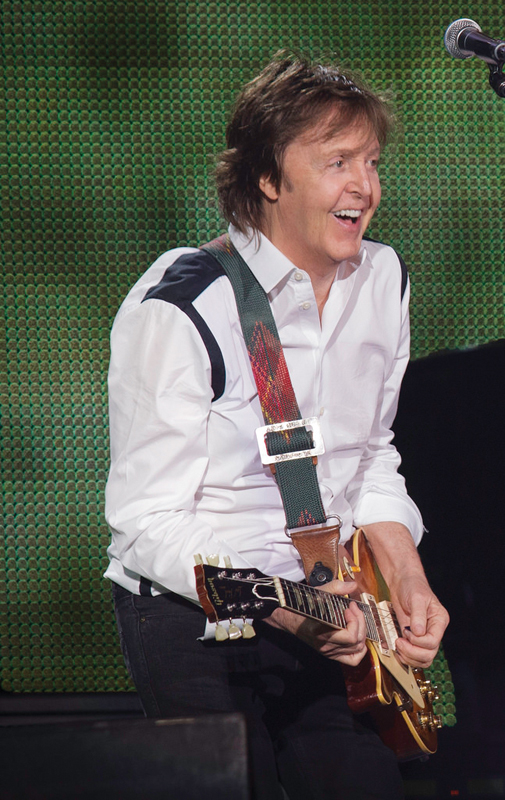
In July, 1965, The Beatles released their second movie, Help! During the sequence for the McCartney-penned country-rocker Another Girl, the band swap instruments, with John Lennon miming the drums, Ringo Starr playing John’s acoustic and George Harrison grappling with Paul’s Hofner 500/1.
Paul’s ‘instrument’ is a model in a bikini. Intentional or not, this light-hearted crossing of the group’s instrumental demarcation lines was a celluloid caricature of what was increasingly taking place behind closed doors during The Beatles’ studio sessions.
Harrison mimes the lead guitar parts for Another Girl on John’s Rickenbacker, but Paul played them in the studio, as he also did on the extraordinary Ticket To Ride, recorded on the same day. Paul’s guitar playing would be similarly prominent on Revolver the following year, with possibly his greatest piece of electric lead work of all lighting up George’s album opener, Taxman.
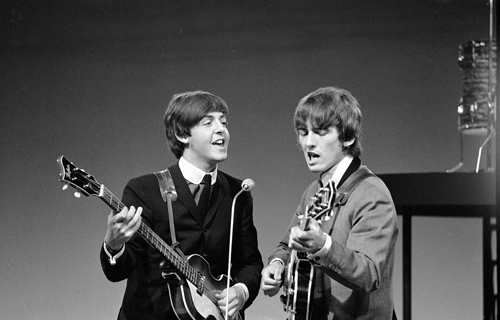
Having proven themselves proportionally as sound an investment for EMI as Elvis Presley for RCA, the Fab Four had been granted unlimited time at the company’s Abbey Road complex.
Therefore, McCartney’s ministrations weren’t corner-cutting strategies dictated by the studio clock, but by his perfectionism and, to a lesser degree, an insistence on ‘written’ parts.
At the console, engineer Norman Smith witnessed how McCartney – and Lennon – were now treating Harrison and Starr as mere tools for their masterworks, noting that “George would have done two or three takes that seemed perfectly all right, but Paul wouldn’t like it, and he’d start quoting American records, telling George to play it like such-and-such a song.
“We’d try again, and then Paul would take over and do it himself on the left-handed guitar he always brought with him. Later, I found out that George had been hating Paul’s guts for this, but didn’t let it show. It says a lot for George that he took so much stick from Paul.”
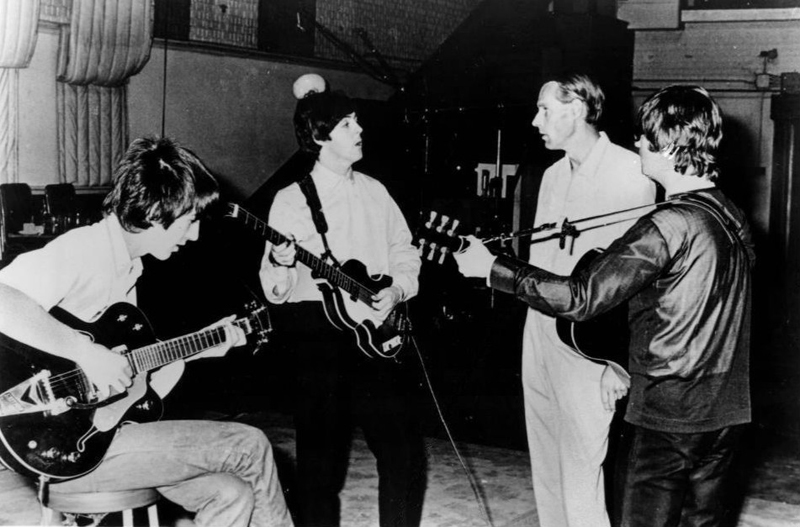
Smith’s successor, Geoff Emerick, was present when McCartney replaced a Harrison solo that took seven hours to record on the title theme of Sgt. Pepper’s Lonely Hearts Club Band.
Was it ever thus? When he joined The Quarry Men in 1958, George had been in the year below Paul at Liverpool Institute High School For Boys, and three years below John at primary school.
Nevertheless, his fretboard skills were the most advanced in The Quarry Men – “though that isn’t saying very much,” qualified Paul, “as we were raw beginners ourselves”.
Very much the junior partner in The Beatles, too, “George, being younger and not writing songs then, didn’t have the same communication with them,” concluded Cynthia, the first Mrs Lennon, “but John and Paul couldn’t stop playing together.”
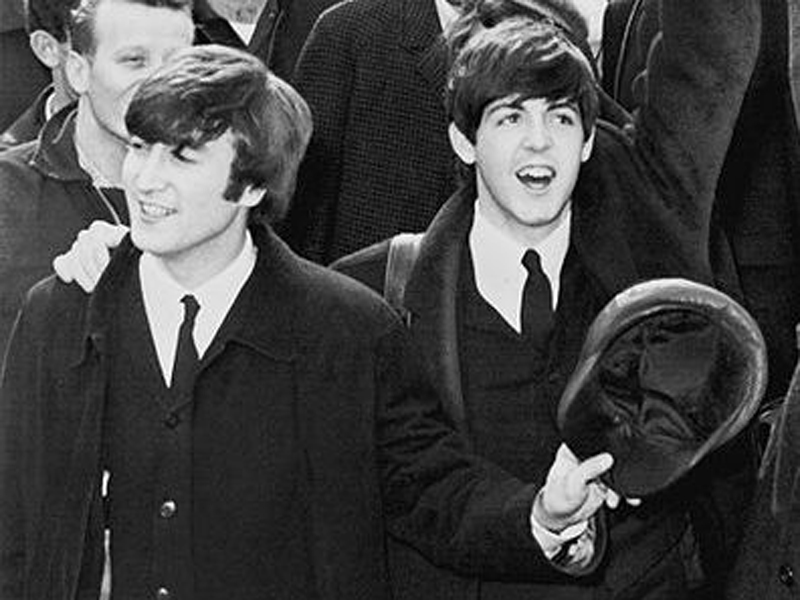
Neither was George’s a particularly musical family – as Paul’s very much was. Indeed, in the McCartney living room, there stood an upright piano.
Whilst it suffered the investigative pounding of the infant Paul’s plump fists, it also tinkled beneath the self-taught hands of his father, who’d once led his own Jim Mac’s Jazz Band. After this ensemble broke up, circa 1927, Jim continued to play for his own amusement – and compose, too.
He was also the principal accompanist on piano – or a Spanish guitar, a Framus of indeterminate vintage – during those ‘musical evenings’ that were a frequent occurrence in many households before television became a fixture.
From being a fascinated listener whenever Dad was seated at the eighty-eights, Paul progressed at his own speed on the instrument, acquiring the rudiments of harmony, and adding to a repertoire that embraced tunes from cross-legged primary school assemblies and – then quite a new idea – traditional songs from Singing Together and other BBC Home Service radio broadcasts to schools.
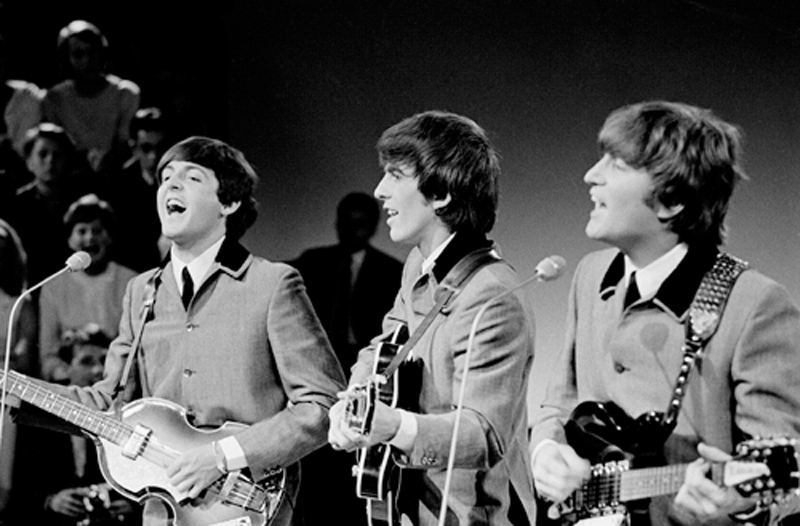
On graduating to the Institute, Paul became as well-known for his musical skills as the school bully and football captain were in their chosen spheres. However, an attempt to master a second-hand trumpet his father had given him was, let’s say, an incomplete success, put off as he was by the unpredictable harmonics, which jarred his teeth.
“Guitars hadn’t come in yet,” he’d recall, “trumpeters were the big heroes then” – especially Eddie Calvert from Preston, in the same neck of the woods. If well into his 30s, he’d shown what was possible by scoring a 1954 No 1 with the sentimental Oh Mein Papa, recorded at Abbey Road Studios.
Yet Paul “couldn’t sing with a trumpet, and I wanted to sing”. Moreover, like all but the most serious-minded adolescents of the 1950s, he’d be thrilled by Rock Around The Clock whenever it intruded upon the airwaves as 1955 drew to a close.
“The first time I really ever felt a tingle up my spine,” he gasped, “was when I saw Bill Haley and The Comets on the telly. Then he came to the Liverpool Empire.”
“The ticket was 24 shillings, and I was the only one of my mates who could go, as no-one else had been able to save up that amount – but I was single-minded about it. I knew there was something going on here.”
Described by Melody Maker as looking like a “genial butcher”, Haley was a disappointment at the Empire, although he paved the way for more genuine US articles, notably Elvis Presley.
In a then-unimaginable future, McCartney was to own the double bass thrummed on Heartbreak Hotel, but in 1956 he was just one of countless British youths who’d been so instantly ‘gone’ on the King’s 78rpm UK chart unveiling that all he could think was that its maker was surely the greatest man ever to walk the planet.
It was the same when Paul discovered Little Richard. In a succinct foreword to Richard’s 1984 biography, he’d recollect, “The first song I ever sang in public was Long Tall Sally in a Butlin’s holiday camp talent competition when I was 14.”
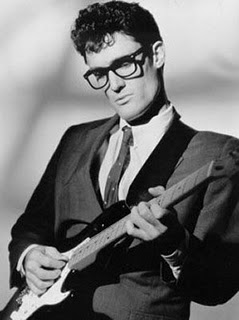
Of more insidious impact was Buddy Holly. While Paul was unable to attend the bespectacled Texan’s show with his Crickets when their sole European tour reached Liverpool in March 1958, he’d studied Holly’s fingers as they fretted chords and picked solos with unflappable ease on ITV’s Sunday Night At The London Palladium that same month, and his early efforts at composition became less of a sideline after constant replays of Buddy and his boys’ Chirping Crickets, a maiden LP consisting mostly of self-penned songs, tailored to lead singer Holly’s elastic adenoids.
Crucially, these demonstrated that rock ’n’ roll could be simultaneously forceful and romantic, and that it could evolve without getting too complex.
Arguably, it was from this realisation that McCartney and Lennon were to evolve into one of the most outrageously successful songwriting partnerships of all time – although the main audience for their efforts then was the McCartneys’ domestic tape recorder.
On these, Paul played either Jim’s Spanish model or a Zenith Model 17 acoustic six-string, having exchanged the trumpet for it at Rushworth and Dreaper in the city centre.
“The story goes that he couldn’t play it because he was left-handed,” recalled Jonathan Rushworth, great-great grandson of the music store’s founder, “so he had to turn the strings round the other way.”
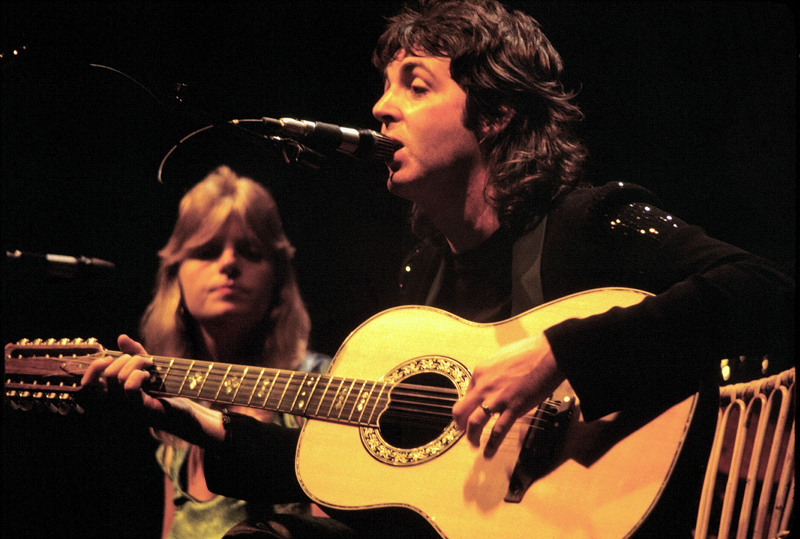
Once he had done so, Paul noticed that the highest string was too loose in the wider notch designed for the lowest one, until the insertion of a bit of matchstick.
With the addition of a magnetic pickup near the bridge, it served as an ‘electric guitar’ from his first date as a Quarry Man – where, crippled by nerves, he made such a hash of an instrumental number that “it wiped me out as a lead guitar player that night” – until The Beatles’ first season in Hamburg with drummer Pete Best (superseded in 1962 by Starr) and, on a newly-purchased Hofner ‘President’ bass, Stuart Sutcliffe.
As one rhythm guitarist too many in this line-up, Paul was strumming a sunburst six-string Rosetti Solid 7 semi-acoustic. “It was really just a good-looking piece of wood,” he sighed, “It had a nice paint job, but it was a disastrous, cheap guitar.”
After Sutcliffe remained in Hamburg, an attempt was made to turn the Rosetti into a makeshift bass by restringing it with wires from a piano, but, with Stuart’s return, Paul was happy to scrap this idea. “Bass was the instrument you got lumbered with,” he said.
“You didn’t know a famous bass player. They were background people, so none of us was prepared to spend money on something like that.”
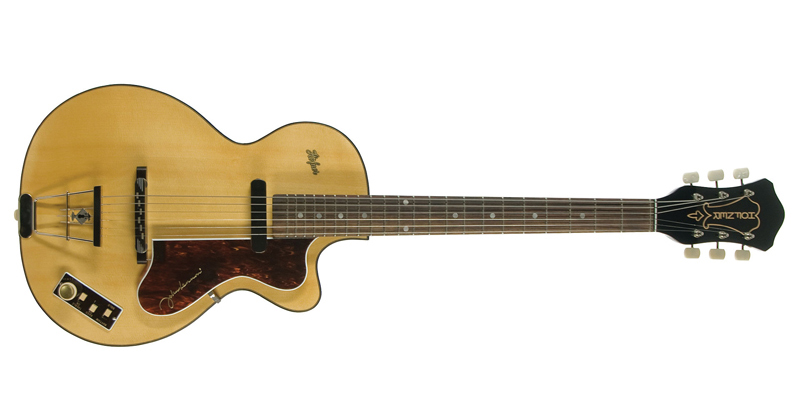
Instead, he continued with the Rosetti, despite damage sustained when it was dropped, and then a hollow-bodied Hofner Club 40 loaned to him by Lennon, who’d bought the Rickenbacker Model 1996 that he’d still be plucking at the height of world-wide Beatlemania.
Yet, no matter how contrasting McCartney and Lennon’s chord shapes could be, Paul found himself too often just singing and gyrating around with an unplugged guitar, or impersonating Little Richard at a given club’s worn-out piano.
The sound, per se, was puny, yet harsh and atrociously distorted as The Beatles battled with amplifiers that were sent through speakers known to tear, explode and even catch fire because of power surges and the mismatch of British and German ohms.
McCartney would recall that “If we had troubles with our overworked amplifiers – we had to plug two guitars into the same one – I’d just chuck it all in and start leaping all round the stage or rushing over to the piano and playing a few chords.”
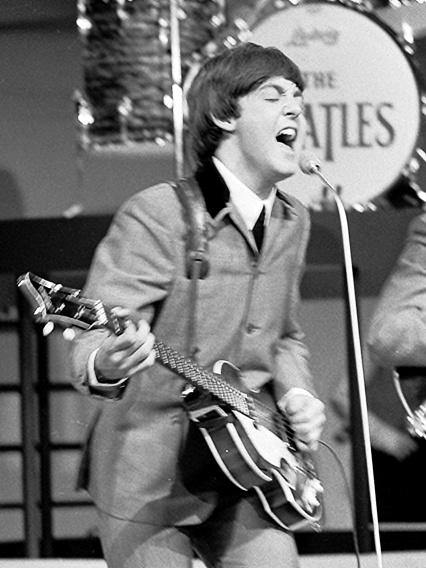
As far as the group as a whole was concerned, matters mended when Sutcliffe left during 1961’s dull and cool July, and The Beatles decided not to replace him, opting instead for the simpler expedient of transferring McCartney permanently to bass.
Before the summer was out, he’d acquired the Hofner ‘violin’ model that was to be his trademark instrument after John, Paul, George and Ringo spearheaded the ‘British Invasion’ of world pop in 1964 – and the bass guitar was no longer “the instrument you got lumbered with”.
Indeed, according to Donald Hirst, of Melbourne group The Spinning Wheels, “McCartney gave the bass credibility.
Before him, it was usually given to the fat boy, who stayed out of sight.” From 1965, however, it would be Harrison’s task to introduce Yesterday from the non-soundtrack side of the Help! album – “For Paul McCartney of Liverpool, opportunity knocks!” – which McCartney delivered to solely his own strumming of an Epiphone Texan FT-79 acoustic.
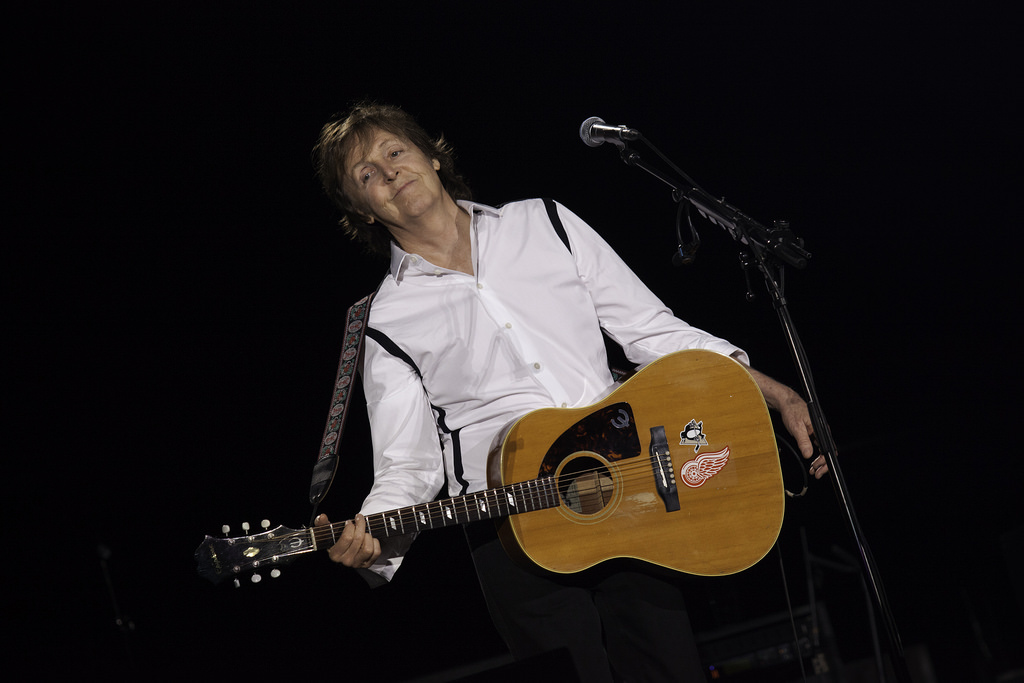
No-one saw any purpose in taking on the road a string quartet like that hired for the session. Money was no object, it was only that any subtleties crammed into such a small spot were lost on what had become tribal gatherings rather than musical recitals.
It was expedient, too, for Harrison to learn parrot-fashion McCartney’s lead lines to Ticket To Ride – which had emanated from a hollow-bodied Epiphone Casino, obtained on the recommendation of bluesman John Mayall, who’d noted it being twanged by the likes of Magic Sam and Otis Rush.
Paul Unplugged
Acoustic six-strings figured on Beatles discs for EMI from the beginning, namely P.S. I Love You, B-side of debut single Love Me Do. McCartney’s first outing might have been on 1964’s A Hard Day’s Night LP’s I’ll Be Back finale. Purportedly, he, Harrison and Lennon all played acoustic six-strings on this track, and Paul was more prominent on I’ll Follow The Sun, from Beatles For Sale.
The earliest all-acoustic Beatles opus was on the Help! album. Furthermore, the two-flute coda of You’ve Got To Hide Your Love Away was the first occasion when auxiliary musicians were hired for a Beatles session, predating Yesterday.
On the next collection, Rubber Soul, Paul’s Epiphone Texan FT-79 was heard on I’m Looking Through You and Michelle. It was to feature, too, on Here, There And Everywhere (Revolver), The Fool On The Hill (Magical Mystery Tour) and All Together Now (Yellow Submarine).
Yet McCartney was to truly come into his own as an acoustic guitarist during The White Album, on Rocky Racoon, I Will, Mother Nature’s Son and, most conspicuously, Blackbird (using a 1967 C.F. Martin D-28), on which the only other instrument was his tapping foot.
One reviewer compared him to Tom Paxton, but Blackbird betrayed more of the arpeggio style purportedly demonstrated to Paul (and John) the previous February by Donovan, a fellow seeker of nirvana at the Maharishi Mahesh Yogi’s yoga-ashram in the Himalayas. Less directly, it was derived from that of Davey Graham, John Renbourn and Bert Jansch, all-fingers-going denizens of Britain’s folk scene, who also influenced, among others, George Harrison and Jimmy Page.
Other relevant Beatles selections worth mentioning are Two Of Us (with both Paul and John on acoustics) on Let It Be, and Her Majesty, the brief McCartney-only coda to Abbey Road, the subject decades later of an apparently impromptu performance during his slot at Party At The Palace, an extravaganza in London to commemorate the Queen’s Golden Jubilee.
Finally, prior to McCartney announcing his resignation from The Beatles in 1970, he spent much of the previous winter taping by multiple overdub an eponymous solo album in the privacy of his home. Overall, it captured a sketchy freshness, even a stark beauty at times.
Certainly, its acoustic emphasis was much at odds with more intense offerings of the day, whether Led Zeppelin, Deep Purple, Man, Black Sabbath, Humble Pie and other headbangingly `heavy’ outfits or the `pomp-rock’ of ELP and Yes, castigated for preferring technique to instinct – and McCartney couldn’t be accused of that.
Enduring as one of Paul’s favourite guitars, his Casino was still being heard in concert and on disc at the turn of the century. He also still owns a single-pickup 1964 Fender Esquire from this period.
Another famous Casino user was Dave Davies, whose Kinks had superimposed Indian sounds onto pop’s grid via 1965’s See My Friends with its plaintive vocal and droning guitars. Dave would recall an encounter in a London club, the Scotch Of St. James, when McCartney said: “You bastards! How dare you! I should have made that record”.
Paul also lent an intrigued ear to The Yardbirds’ similar ventures into areas far removed from their R&B core through hits such as Heart Full Of Soul, Evil Hearted You, Still I’m Sad, Shapes Of Things and Over Under Sideways Down, all hybrids of instant familiarity and unpretentious musical innovation.
Though, for example, a sitarist had been hired for Heart Full Of Soul, such ostentation was disregarded after Jeff Beck’s guitar tone exhaled what was in pop terms a more pungent breath of the Orient.
Beck, Davies and perhaps other victims of the same passion – such as Dick Taylor of The Pretty Things and Ian ‘Tich’ Amey of Dave Dee, Dozy, Beaky, Mick and Tich – left their mark, however involuntarily, on McCartney’s lead guitar contributions (sometimes shared with Harrison and Lennon)
to Taxman, Good Morning Good Morning (the final solo), Fixing A Hole and elsewhere on Sgt Pepper’s Lonely Hearts Club Band, and – on The White Album – Back In The USSR, Helter Skelter, Honey Pie and Martha My Dear, plus the medley that closes 1969’s Abbey Road.
Displaying eclecticism and unpredictability in compatible amounts, his solos and passagework were constructed to integrate with the melodic and lyrical intent of a piece.
This approach seemed attractively unfussy to anyone attuned to the more obvious aesthetics of a song than a reaction largely to underlying chord sequences with high-velocity flash – as dispensed, for instance, by Eric Clapton, Jeff Beck’s predecessor in The Yardbirds, on A Certain Girl, one of the outfit’s B-sides, in which his break has almost a separate life from the rest of the number.
Clapton was among catalytic familiars who added icing to the cake of The White Album. During the making of this, too, some have speculated that Paul began holding in his heart the possibility that The Beatles would be recalled as just the entity in which he’d cut his teeth before going on to bigger and better things.
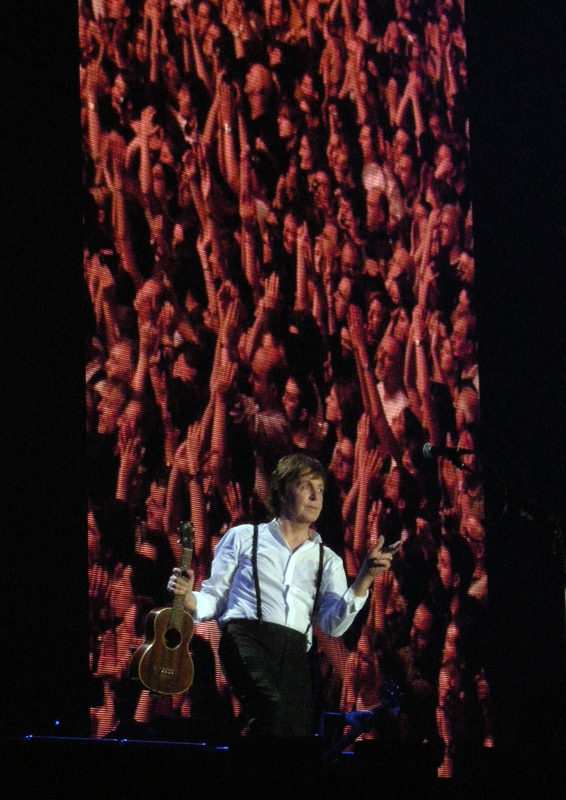
Indubitably, he was to rack up heftier sales and honours as an individual and as leader of Wings – most memorably with 1977’s Mull Of Kintyre overtaking She Loves You as the UK’s biggest-selling single – after the group was dissolved formally in the Chancery Division of the London High Court on 12 March 1971.
However, most relevant to this discussion are his good, old-fashioned guitar-playing rearing up amid the fusion of down-tempo house and a vague strata of dub-reggae on 1993’s Strawberries Oceans Ships Forest and 1998’s more free-form and slow-moving ambient-techno of Rushes by The Firemen.
Before this teaming up with modern dance paladin Martin ‘Youth’ Glover, nevertheless, McCartney had released Choba B CCCP, a USSR-only album of 13 favourite non-originals,mainly from the annals of classic rock.
If nothing else, Paul sounded as if he enjoyed revisiting them. According to the appointed bass player, Nick Garvey, of The Motors, “I went to a rehearsal place in Woolwich where Macca ran through and recorded several things with me on bass, him on guitar and “live” vocals, Mickey Gallagher on piano and Terry Williams on drums. Macca played guitar like it was easy as hell.”
Finally, on receiving his knighthood in 1997, McCartney commissioned the designing of a coat of arms. It was to embrace four shapes resembling beetles, two circles representing records, the title of his Ecce Cor Meum oratorio, a singing Liver bird – and, of course, a guitar.
Author: Alan Clayson
Live photographs: Jimmy Baikovicius

No hay comentarios:
Publicar un comentario